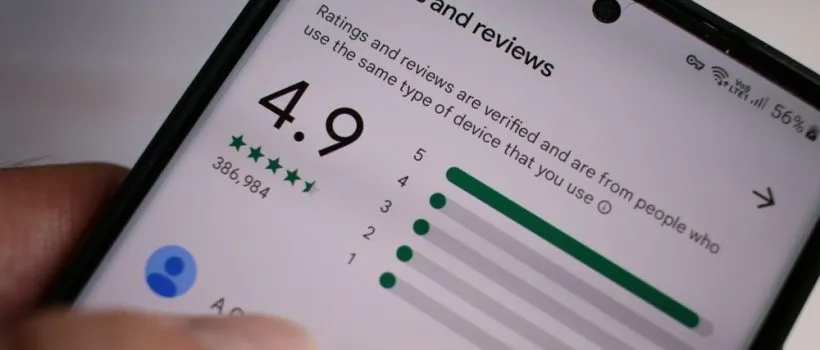How Customer Reviews Can Help You Pick the Right Provider

Choosing a phone or internet provider can feel overwhelming. With so many options, flashy advertisements, and confusing plan details, it’s hard to know which service is right for you. Marketing often only shows the “best side” of a provider—fast speeds, unlimited data, and low prices—but rarely mentions potential pitfalls. That’s where customer reviews come to the rescue. They give you a real peek into what life with that provider is actually like.
In this article, we’ll dive deep into why reviews matter, how to interpret them, and how to combine them with other research to pick the best provider for your needs.
Why Customer Reviews Actually Matter
Before diving into plan details, it’s worth understanding why reviews are so powerful. Advertisements can be misleading, and even providers with high ratings in marketing campaigns may have hidden issues. Customer reviews give you unfiltered insights into speed, coverage, reliability, and customer support.
Real Stories, Real Help
Reading reviews is like getting advice from a friend who’s already tried the service. You’ll see things that marketing materials don’t tell you, such as:
Dropped calls in certain areas
Internet speeds that slow down during peak hours
Issues with billing or surprise fees
These first-hand accounts give you a clearer picture of what to expect and help you avoid costly mistakes.
Spotting Patterns
One offhand complaint doesn’t mean much. However, when several people mention the same problem, it often indicates a recurring issue with the provider. Spotting these patterns helps you anticipate potential challenges before you commit.
Which Reviews Should You Trust?
Not all reviews are created equal. Some are vague, fake, or overly biased. Learning to filter the helpful ones is key to making the right choice.
Detailed Experiences
The most useful reviews give specifics: what happened, where, and how the company responded. Detailed experiences allow you to predict whether the provider will work well in your situation.
Verified Customers
Many platforms mark reviews from verified customers, which means the person actually used the service. These reviews are more credible than anonymous posts or generic opinions.
Balanced Feedback
Reviews that mention both pros and cons are often more trustworthy. For instance: “The internet is fast, but customer support can take time to respond.” Balanced reviews show you what works and what doesn’t in real-world usage.
How to Use Reviews to Compare Providers
It’s one thing to read reviews, but another to use them to make smart comparisons. Here’s a step-by-step approach:
Step 1: Check Overall Ratings
Start with the overall ratings for each provider. This gives you a snapshot of customer satisfaction, but it’s just a starting point.
Step 2: Read Recent Reviews
Service quality can change over time. Focus on recent reviews to get an accurate idea of the current state of service.
Step 3: Look for Common Complaints
Identify recurring problems that might affect you, like:
Frequent outages or slow internet speeds
Billing errors or hidden fees
Poor customer service responsiveness
These trends often indicate systemic issues rather than isolated incidents.
Step 4: Match Reviews to Your Needs
Everyone has different priorities. Heavy streamers will focus on speed and reliability, while people who need support value responsive customer service. Filter reviews based on what matters most to you.
Benefits of Using Reviews
Customer reviews aren’t just informative—they’re practical. Here’s why you should pay attention:
Avoid Bad Surprises
Reviews give you a heads-up on issues you might not notice until after signing up. This helps you avoid slow internet, hidden fees, or frustrating customer service experiences.
Discover Hidden Gems
Smaller or lesser-known providers may offer better service at competitive prices. Reviews can highlight these hidden gems that marketing materials might overlook.
Save Money
Learning from others’ experiences helps you choose a plan that fits your budget while avoiding providers that overcharge or underdeliver. This ensures you get the best value for your money.
Where to Find Reliable Reviews
If you’re ready to dive in, here are the best places to start:
Google Reviews – Quick ratings with lots of opinions, plus location-based feedback.
Trustpilot – In-depth reviews focused on customer satisfaction and service quality.
Consumer Affairs – Detailed company ratings and verified customer feedback.
Reddit & Forums – Real discussions and recommendations from local users.
Social Media – Facebook groups or community pages often have real experiences shared by people in your area.
Each platform has its strengths, so using a combination gives you a full picture.
Common Mistakes to Avoid
Even with reviews, it’s easy to make mistakes if you’re not careful:
Falling for Fake Reviews – Be wary of overly positive or negative reviews with little detail.
Overreacting to One Bad Review – Isolated complaints may not reflect overall service quality.
Ignoring Context – Location, plan type, and usage patterns matter. One user’s bad experience might not apply to you.
Extra Tips to Make Your Decision Easier
While reviews are valuable, combine them with other research to make the smartest choice:
Compare Plans – Look at speeds, data limits, and pricing across providers.
Check Current Promotions – Discounts or deals may not appear in older reviews.
Ask Around – Neighbors, friends, or colleagues often have firsthand advice about local providers.
This combined approach helps you make a fully informed decision.
Final Thoughts
Picking the right phone or internet provider doesn’t have to be stressful. Customer reviews are like your personal guide, showing you what’s really happening behind the marketing hype. By focusing on patterns, prioritizing detailed feedback, and doing a little extra research, you can choose a provider that fits your lifestyle, budget, and expectations.
Start reading reviews today, compare providers in your area, and make a smart choice that keeps you connected without surprises. Other people’s experiences can save you time, money, and a lot of frustration.
Related Posts

Fri, Dec 5, 2025 12:20 PM
TechnologyWhy You Need a VPN Today (and How It Protects You Online)
Learn how VPNs protect your data, block tracking, and secure your connection across every device.

Thu, Dec 4, 2025 3:30 AM
Internet BundlesBest Fiber Internet Providers in the US : Fast, Reliable, and Worth It
Discover the top fiber internet providers in the US, their speeds, pricing, and customer satisfaction ratings. Find the best plan for fast, reliable, and uninterrupted internet.

Thu, Dec 4, 2025 3:17 AM
Internet Bundles cheap internet dealsHughesnet Satellite Internet Review: Plans, Pricing, Speed
Get an in-depth Hughesnet Satellite Internet review covering plans, pricing, speed, and performance. Learn whether Hughesnet is the right choice for rural or remote households

Wed, Dec 3, 2025 2:36 AM
Internet BundlesBest Cheap Internet Plans Under $50 a Month You Can Actually Use
Discover the best cheap internet plans under $50 per month with reliable speeds, unlimited data, and flexible options. Compare top providers and find the right plan for your home.

Wed, Dec 3, 2025 2:05 AM
cable dealWhat Can You Really Do With a 100 Mbps Internet Connection?
Discover what a 100 Mbps internet connection can handle, from streaming and gaming to remote work. Learn how to choose the right plan for your household.